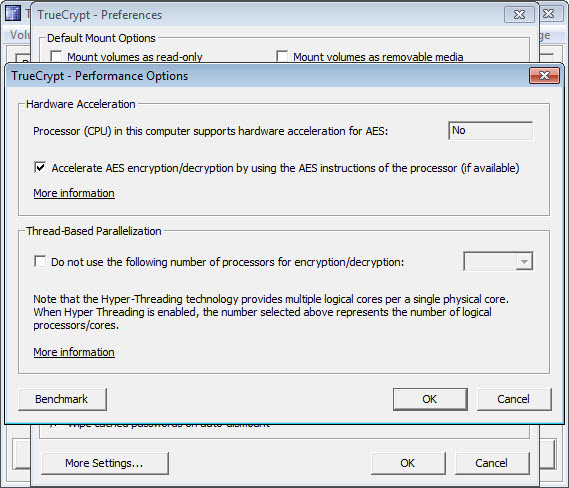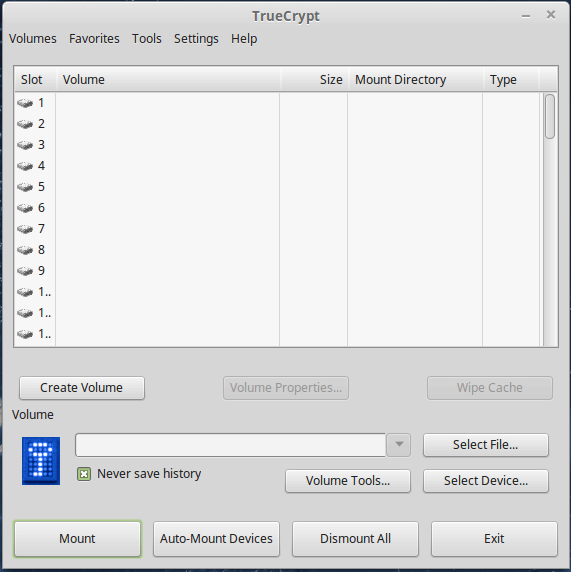
- TRUECRYPT FILEHIPPO FOR MAC
- TRUECRYPT FILEHIPPO PC
- TRUECRYPT FILEHIPPO LICENSE
- TRUECRYPT FILEHIPPO WINDOWS
As many suppose, this could be the sort of warrant canaryĪssumption #2 is more likely true than assumption #1. It looks like a clear sign that the developer can't say he's in danger so he did this. Although I find TPM to be a great solution in some cases (like embedded systems where you can't return to OS from fullscreen application) and used it a lot as a developer, I can't imagine why would TrueCrypt developers suggest such a thing and not other open-source alternatives. Why is it ridiculous for TrueCrypt developers to suggest moving to BitLocker? Well, TrueCrypt was strictly against of using TPM because it may contain extra key chains which allow agencies like NSA to extract your private key.
TRUECRYPT FILEHIPPO LICENSE
License text is changed too (see the diff below).
TRUECRYPT FILEHIPPO PC
Why I think so: all files are with valid signatures, all the releases are available (Windows Linux x86, x86_64, console versions, Mac OS, sources), the binaries seems like was built on the usual developer PC (there are some paths like c:\truecrypt-7.2\driver\obj_driver_release\i386\truecrypt.pdb, which were the same for 7.1a).

found the worst vulnerability ever) which made them do such a thing. take down or death) or to TrueCrypt itself (i.e. Why I think so: strange key change, why bitlocker?Īssumption #2 Something bad happened to TrueCrypt developers (i.e. On the SourceForge, the keys were changed before any TrueCrypt files uploaded, but now they are deleted and the old keys got reverted back. All old versions are wiped, the repository is wiped too.Īssumption #1 The website is presumed hacked, the keys are presumed compromised. The binary is signed with the valid (usual) key. The binary on the website is capable only to decode encrypted data, not encode, and may contain trojan (seems like it doesn't, but don't believe me). Quoting TrueCrypt Developer David: “There is no longer interest.”
TRUECRYPT FILEHIPPO WINDOWS
TrueCrypt Developer “David”: Said “Bitlocker is ‘good enough’ and Windows was original ‘goal of the project.’ ” Steven Barnhart: “Also said no government contact except one time inquiring about a ‘support contract.’ ” Steven Barnhart: “I asked and it was clear from the reply that "he" believes forking's harmful because only they are really familiar w/code.” Steven Barnhart: (Paraphrasing) Developer “personally” feels that fork is harmful: “The source is still available as a reference though.” We worked hard on this for 10 years, nothing lasts forever.” Steven Barnhart wrote to an eMail address he had used before and received several replies from “David.” The following snippets were taken from a twitter conversation which then took place between Steven Barnhart and Matthew Green Developer “David”: “We were happy with the audit, it didn't spark anything. Am I reading too much into this?ĮDIT2: I'm talking about this image that can be found here

What if, as /u/TocasLaFlauta puts it, they are warning us to stay away from their product as best as they can whilst avoiding being backlashed by the unidentified force that's pushing them to do this?īetter even, what if this is actually a very detailed warning? Like "Stay off of BitLocker if you're windows." and "Stay the fuck off of OSX altogether!!"? Meaning, Bitlocker has an accessible backdoor and OSX Encrytion doesn't but the system has one that enables access to users' files. Again, I'm not an OSX user so maybe there's something I'm not aware of but still it doesn't seem right.īut then, while reading other comments in here, it got me thinking. Those instructions tell you to:Įt voilá, you've got a an encrypted image.

TRUECRYPT FILEHIPPO FOR MAC
That same page where you saw that ridiculous linux recommendation has instructions for mac users too. I already said this on r/privacy but I think it's relevant here. Will also delete on comment score of -1 or less. Parent commenter can toggle ^NSFW or ^delete. Interesting: Warrant ^(law) | ^Cypherpunk | Patriot Act, Title ^V | American Civil Liberties Union v. Image i - Library warrant canary relying on active removal designed by Jessamyn West The intention is to allow the provider to inform users of the existence of a subpoena passively without disclosing to others that the government has sought or obtained access to information or records under a secret subpoena.

If the canary has not been updated in the time period specified by the host, users are to assume that the host has been served with such a subpoena. A warrant canary may be posted by the provider to inform users of dates that they have not been served a secret subpoena. §2709(c) of the USA Patriot Act, provide criminal penalties for disclosing the existence of the warrant to any third party, including the service provider's users. Secret subpoenas, including those covered under 18 U.S.C. A warrant canary is a method by which a communications service provider informs its users that the provider has not been served with a secret United States government subpoena.


 0 kommentar(er)
0 kommentar(er)
